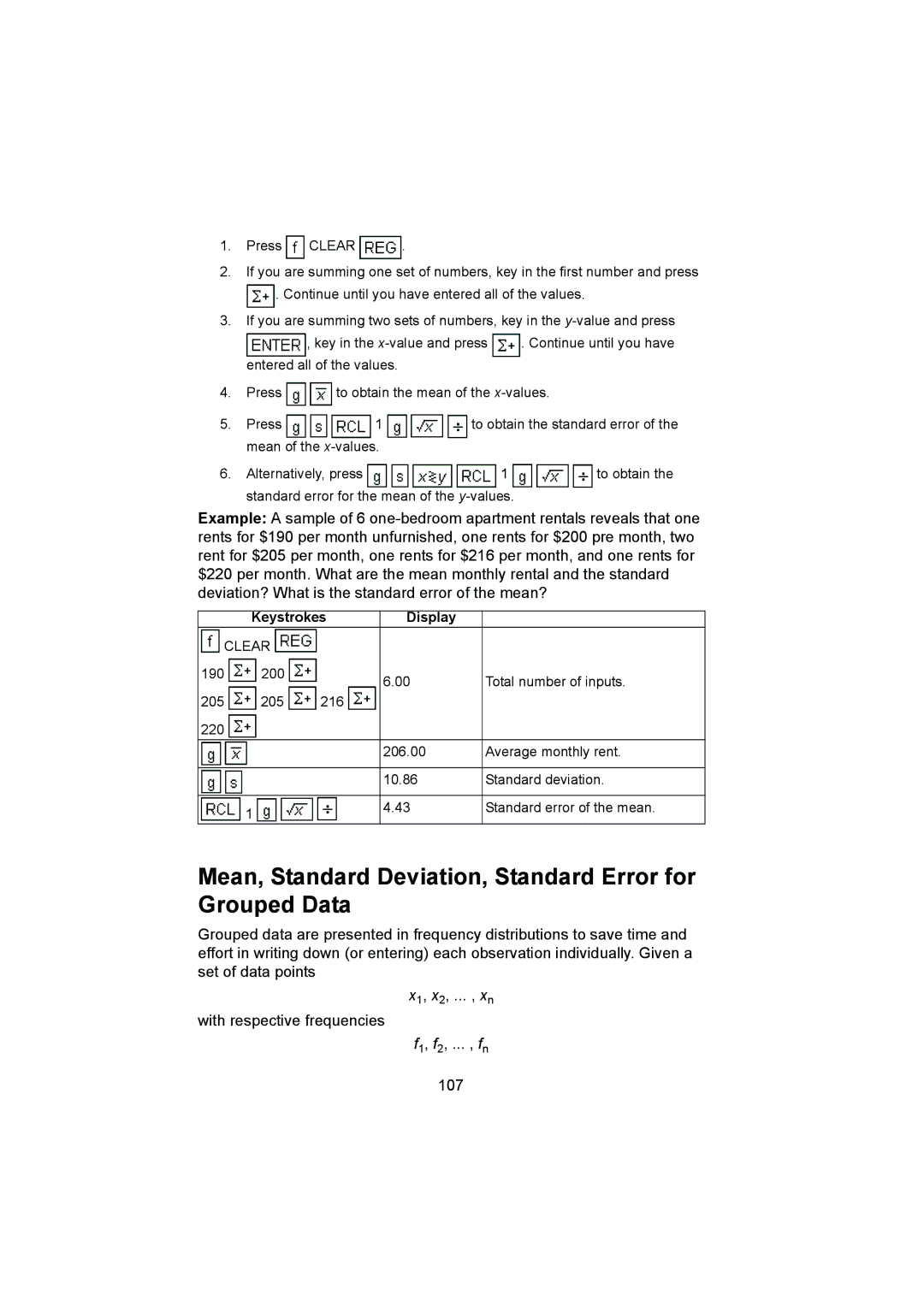
1.Press ![]() CLEAR
CLEAR ![]() .
.
2.If you are summing one set of numbers, key in the first number and press
![]() . Continue until you have entered all of the values.
. Continue until you have entered all of the values.
3.If you are summing two sets of numbers, key in the
![]() , key in the
, key in the ![]() . Continue until you have entered all of the values.
. Continue until you have entered all of the values.
4.Press ![]()
![]() to obtain the mean of the
to obtain the mean of the
5.Press ![]()
![]()
![]() 1
1 ![]()
![]()
![]() to obtain the standard error of the mean of the
to obtain the standard error of the mean of the
6.Alternatively, press ![]()
![]()
![]()
![]() 1
1 ![]()
![]()
![]() to obtain the standard error for the mean of the
to obtain the standard error for the mean of the
Example: A sample of 6
| Keystrokes | Display |
| |
| CLEAR |
|
|
|
190 | 200 |
| 6.00 | Total number of inputs. |
|
|
| ||
205 | 205 | 216 |
|
|
220 |
|
|
|
|
|
|
| 206.00 | Average monthly rent. |
|
|
|
|
|
|
|
| 10.86 | Standard deviation. |
|
|
|
|
|
| 1 |
| 4.43 | Standard error of the mean. |
|
|
|
| |
Mean, Standard Deviation, Standard Error for Grouped Data
Grouped data are presented in frequency distributions to save time and effort in writing down (or entering) each observation individually. Given a set of data points
x1, x2, ... , xn
with respective frequencies
f1, f2, ... , fn
107
